Soulines are based in Serbia and make just four turntables, the Hermes DCX, the Dostoyevsky  DCX, the newly released Elgar DCX and the turntable under review here, the Kubrick DCX.
DCX, the newly released Elgar DCX and the turntable under review here, the Kubrick DCX.
The philosophy of Soulines is that the interaction between each component that makes up a turntable is equally important and so they balance the construction with a number of “good compromises” to ensure a finished product where all the individual parts come together to work together. Their engineering principles are solid and yet not over-complicated and their turntables are essentially hand made with the benefit of CAD and advanced CNC manufacture.
Critical parts of each turntable such as the platter, main bearing and spindle are not manufactured in batches but individually made so they fit each other specifically.
The Kubrick is the top of the Soulines range and they say that it is their most advanced turntable. It is built around the company’s inverted main bearing and a 40mm thick, 3.2Kg acrylic platter (The same as on the Hermes DCX) and has a very rigid aluminium plinth and sub-plinth that is constructed from a series of “layers” or blocks that are coupled together and damped where needed using cork-rubber. The blocks used are put together according to the “Golden Ratio” and “Fibonacci Sequence” which the company’s literature says “gains uniform vibration damping and the reduction of the moment of inertia in all three planes (along all three axes) to the centre of mass”.
The motor, mounted on the main plinth, is of high quality and you can adjust the speed between 33 and 45 with the flick of a switch located on the front left of the turntable. The Kubrick is a belt drive turntable.
The inverted main bearing is machined from solid brass and stainless steel and, along with the solid  aluminium armboard, is mounted directly onto the sub plinth, which is in turn three point decoupled from the main plinth. The platter spins freely, smoothly and is perfectly flat.
aluminium armboard, is mounted directly onto the sub plinth, which is in turn three point decoupled from the main plinth. The platter spins freely, smoothly and is perfectly flat.
The Kubrick is supported on three adjustable cones, is a doddle to get level and it comes with three interchangeable arm boards for SME, Rega/Origin Live and Jelco.
The supplied turntable came with a Jelco SA750 tonearm and I fitted my trusty Audio Technica EV33 moving coil cartridge. The arm is sub £400 if bought separately and is an S shaped arm with removable headshell. Whilst I do have the Origin Live Silver arm available I wanted to test the Kubrick as supplied as it is the turntable we are reviewing here. The price of the turntable including the arm is €4000
Packaging for the Kubrick is spectacular in its completeness and attention to detail and it even comes with a simple but effective removable Perspex cover – other manufacturers note that this is a good thing please. Also included was a set up disc for accurate cartridge alignment, which again is a useful and thoughtful addition – it has three different alignment methods. Instructions are clear and concise!
All in all unpacking and set up takes around an hour with most of that being spent with the usual cartridge set up. Placement was atop the usual IKEA arrangement that serves as the hifi rack and no further isolation was used.
First of all let me say that I absolutely adored the look of this turntable with its brushed aluminium chassis and sub chassis, all set off with the substantial acrylic platter. It’s modern looking and yet quite understated. There are little details such as the lovely little on/off and speed control switches that certainly add to the feeling that this is a well designed and high-aiming product. I can’t see any but the most traditional not admiring this on their rack.
There is no extra box for a power supply, but there is a little wallwart.
The knuckle rap test on the two forward positioned supports has little perceptible effect on the cartridge, but when applied to the housing where the motor is located there is easily perceptible vibration reaching the stylus. However, when there is no music playing and the stylus is placed on the record there is no motor noise reaching the stylus that I could hear! The motor emits a very low volume whirr that you have to put your ear next to the unit to hear. The Kubrick is not particularly susceptible to foot fall and I didn’t find myself needing to scream at people to tip toe around whilst listening to vinyl.
Some Tunes
Bass is often my first port of call when checking out a new bit of kit and so it was with the Kubrick. I found myself grabbing the excellent “SSSS” by Vince Clarke and Martin L. Gore on 180 gm vinyl. Well certainly no complaints at all here and the music forges ahead with the required drive and energy. In some ways, the bass the Kubrick brings is a little like my heavily modded Technics 1210 which suggests to me that the pitch is stable and rock solid…very similar indeed to the quality of the direct drive Techy and this is a good thing. The mix (stereo image) is solid and it is easy to identify individual instruments in their relative space, which again suggests to me that there are no timing issues that need concern us. In some ways listening to this record on the Kubrick reminded me of good quality digital playback, but with a much more organic and natural feel to it. There are no discernible pops and clicks displaying themselves overly which was nice!
On to some guitar music and Baden Powell’s “L’Ame de”. Here there is no wobbly pitching in the guitar which would otherwise suggest speed inconsistencies and what you are left with is just a natural sounding guitar. The attack and decay on guitar is correct and there are great levels of detail in the stereo image. The delicate and intricate finger work on the record is all there and this record really was a joy to listen to on the Kubrick. Like the Analogue Works One turntable I reviewed recently there’s a feeling that the Kubrick really isn’t adding a great deal to the music, but with the Kubrick I’d suggest that there’s a smidgen more detail coming through – perhaps this is due to the more sophisticated isolation at play on the Kubrick.
On Fleetwood Mac’s “Rumours” there’s a firmness and sure-footedness to the rhythm section,  whilst delicate taps on the hats come through in fine detail. Again I get the impression there’s more being pulled from the grooves with the Kubrick than the One, especially at the top end. Likewise with 10 000 Maniacs “The Wishing Chair” there’s that coherence and play between drum and bass that just gets your feet tapping to the beat… yet loads of detail here too. But that’s not to suggest that these frequencies are exaggerated or overblown and the mids are sacrificed…it’s just that these are the areas in music I especially enjoyed with the Kubrick.
whilst delicate taps on the hats come through in fine detail. Again I get the impression there’s more being pulled from the grooves with the Kubrick than the One, especially at the top end. Likewise with 10 000 Maniacs “The Wishing Chair” there’s that coherence and play between drum and bass that just gets your feet tapping to the beat… yet loads of detail here too. But that’s not to suggest that these frequencies are exaggerated or overblown and the mids are sacrificed…it’s just that these are the areas in music I especially enjoyed with the Kubrick.
I notice here that I’m reaching for quite similar styles of music – music with a strong backbeat and I think this is where the Kubrick comes into its own somewhat – solidity, drive, and rhythm suggesting again to my mind great timing from the Kubrick.
Sadly I don’t have a great number of 45s but reaching for an ancient copy of Timothy Leary meets The Grid proves the 45 speed seems to be spot on and constant too. With this record you get the impression again that the Kubrick is really driving the music forward and it’s certainly allowing the stylus to dig out the very deep bass on the record. I do like the fact that you can change the speed at the flick of a switch without faffing around with belts and pulleys. I also like the fact that the Kubrick starts up at the flick of a switch!
Conclusions
I liked the Kubrick turntable from Soulines a great deal and I shall miss it when it goes back to  Serbia…which sadly it must… via Holland. The way it brings out the rhythm section and drive in records is really very addictive and you will find yourself reaching for this kind of record just to experience this effect over and over. As I mentioned it’s very much like a very good direct drive turntable in this respect.
Serbia…which sadly it must… via Holland. The way it brings out the rhythm section and drive in records is really very addictive and you will find yourself reaching for this kind of record just to experience this effect over and over. As I mentioned it’s very much like a very good direct drive turntable in this respect.
I don’t believe that the Kubrick favours one kind of music over another though and it is as happy playing funk as it is playing “classical” guitar. Likewise it’s as equally at home playing “audiophile” female vocals as it is banging techno.
The design of the Kubrick is such that it allows the cartridge and arm to do their thing and get the most out of the grooves as possible and I would definitely class the Kubrick as adding very little of its own flavour.
Soulines have gone to a lot of trouble to produce a turntable that performs very well as well as look great and this level of workmanship really must be applauded. It’s not cheap at €4000 including the arm, but neither is this an extortionate amount of money to ask for such a product.
Build Quality: 8.5/10
Sound Quality: 8.75/10
Value For Money: 8/10
Overall – 8.4/10
Recommended for people seeking a great looking, nicely engineered turntable, that is as plug and play as it gets at this level, but also delivers on sound.
Author –Stuart Smith
How we carry out reviews.
Read more Hifi Review.










































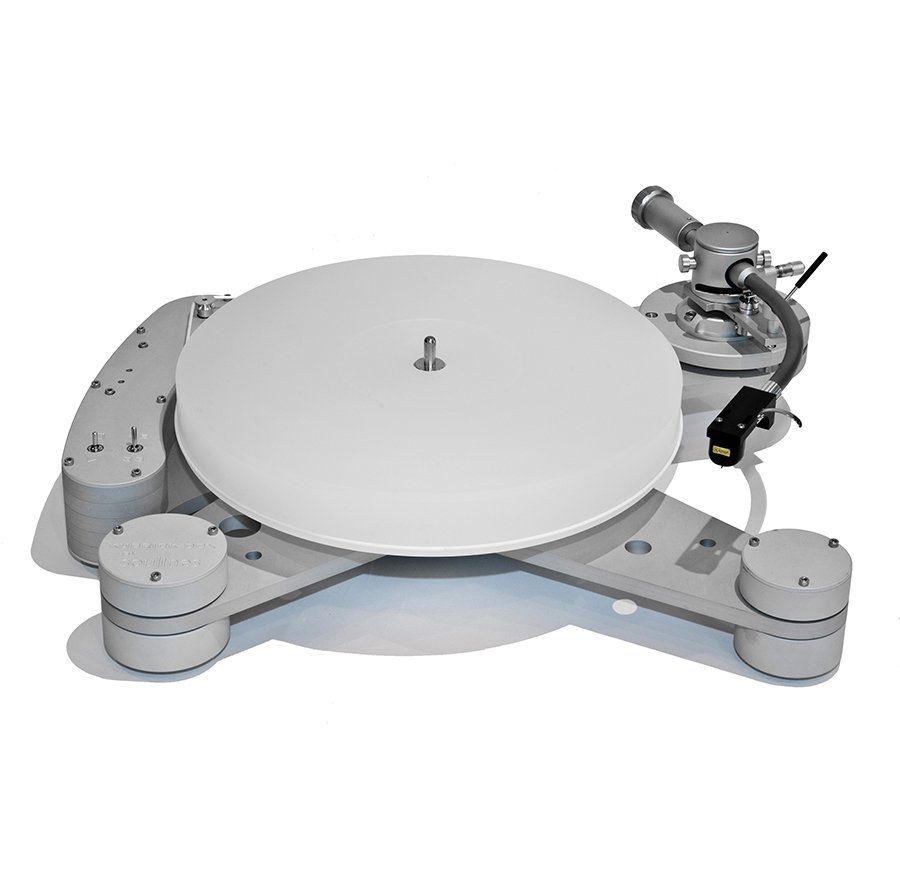

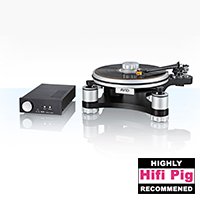












































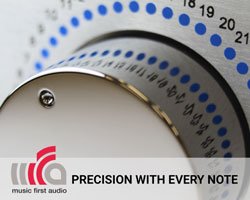

















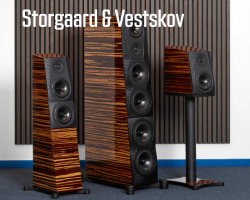











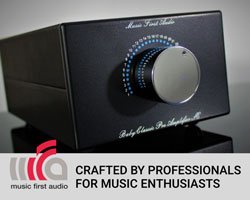













































You must be logged in to leave a reply.